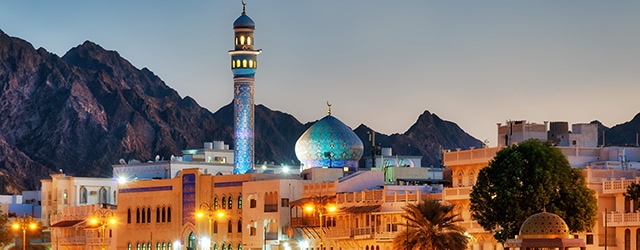Haitham bin Tariq is the first Omani ruler with a background in business.

After half a century under the rule of Sultan Qaboos, Oman is turning a new page. His successor and cousin Haitham bin Tariq is stepping in at a difficult time.
Economic Reforms Necessary
Challenges ahead are huge. The first one is a soaring public debt. This year, Oman’s debt-to-GDP ratio is expected to reach 60%, compared to only 17% in 2015. This is due mainly to the collapse of oil prices on which Oman is still heavily reliant. The country needs to implement reforms to diversify government revenues.
Subsidy cuts to electricity and fuel are underway but, contrary to other rich oil producers, Oman can’t rely on a wealthy population to absorb austerity easily. The sultanate’s GDP per capita is relatively low (around $15,000) and unemployment is a major challenge. While more than half of Omanis are under the age of 25, 49% of that age group is currently without a job.
To ensure fiscal consolidation, the IMF is urging Oman to introduce a 5% value added tax by 2021 but the measure is widely unpopular. The new head of state does not have Qaboos’ strongman aura and must be careful not to start his rule with measures that could trigger social unrest.
Strategically located along oil shipping lines between Saudi Arabia and Iran, Oman’s position has always been one of neutrality and mediation. But will the new challenges ahead, will Tariq still be able to chart an independent course?
Haitham bin Tariq is a mystery to most observers. A graduate of Oxford University, he is the first Omani ruler to come in with a background in business.
Bin Tariq has held a number of government positions and run several business ventures—including the National Trading Company, a construction and trade firm that builds powerplants and acts as an agent for most international companies operating in Oman. His professional experience seems to indicate that he will be able to rely on strong relationships in both political and economic power spheres.
In 2013, he was appointed to lead Vision 2040, the country’s economic transformation strategy which essentially aims at diversifying sources of revenue by reducing government spending, boosting the private sector, and attracting foreign investment. This should read positively but the new Sultan also carries business failures in his employment history.
The most famous one if the Blue City Project: A $15 million—$20 billion brand new waterfront city to the north of Muscat. With hotels, housing, entertainment facilities, a university and a hospital it is the country’s biggest property development project. After years of mismanagement, the dream turned into a financial scandal that required the intervention of Oman’s sovereign fund in 2012.
Stressed Banking Sector
Oman’s banking sector is still very young. It virtually came to existence in 1974 with the Banking Law and creation of the Central Bank. Although it is small —the biggest lender of 20 licensed banks has around $32 billion under assets—it is generally considered stable. The new ruler will have to make sure it remains so.
The government has strong ownership of most local lenders, who control most of the retail market while 9 foreign lenders specialise in corporate finance. The state is also the largest depository to domestic banks, accounting for over a third of deposits. If the state was to withdraw these deposits to finance let’s say, fiscal deficit, that could be major blow to the financial sector. Up until now, the public sector has preferred turning in to international lenders for liquidities but how long can that last?
Like in other GCCC countries, banking consolidation is underway in Oman. Last December, Alizz bank signed an memorandum of understanding for upcoming merger with Oman Arab Bank. Together they would for the country’s third largest Islamic Bank. Last year, the announced merger between Bank Dhofar and National Bank of Oman—which could have formed the country’s second largest lender—fell through.
Privatisation Ahead
International consulting firms have identified several high growth potential sectors Oman should bank on to diversify including renewable energies, mining, transport logistics and tourism.
To boost its profile with international investors, Oman recently passed new Foreign investment and Public Private Partnership laws. The sultanate is also starting to sell some of the crown jewels in an effort to raise cash. In December 2019, China’s State Grid Corporation acquired 49% of Oman’s power transmission company for a non-disclosed amount. Muscat Electricity Distribution and Oman Oil could be up for acquisition next.



